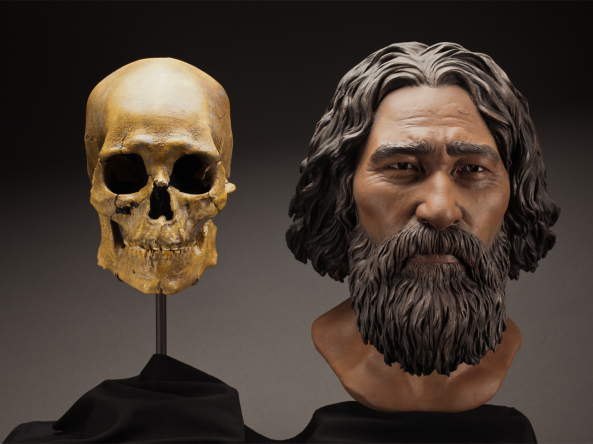
Kennewick Man is an ancient skeleton found along the banks of the Columbia River by students in 1996. The discovery caused a legal battle between Northwest tribes and scientists.
But now, President Barack Obama has signed a bill that requires the 9,000-year-old remains be returned to tribes within 90 days.
Washington Sen. Patty Murray, a Democrat, championed the bill that gives the ancient bones to the tribes.
Several Northwest tribes are meeting this week with the U.S. Army Corps of Engineers and with the Washington state Department of Archaeology and Historic Preservation to discuss the imminent reburial of the Ancient One, or Kennewick Man.
People have continuously lived in north central Oregon for thousands of years. So Rob Begay, whose family is from Celilo Village on the Columbia River, said the scientists can’t tell him much about a story he already knows about Kennewick Man and his own people.
“Maybe they read too many books or something,” Begay said. “Because all of those things about the Native Americans, of how supposedly we were, are really not true. A lot of those are their own theories of why they think we are from somewhere else.”
“But as for me, my parents and my grandparents and down the generations back thousands upon thousands of years — that was our oral traditions, stories — that we were created here from time immemorial.”
Begay said it’s important to respect the Earth. In the origin stories, that’s where his people come from. In fact, he points to a long strip of exposed earth in the center of this longhouse.
“This floor, Mother Earth, that’s where we come from,” Begay said. “This is our altar here. To us this is altar. That’s why this right here, why we stand on both sides of it.”
It’s important for Begay and others here to see Kennewick Man — or the Ancient One — returned to that sacred earth.
A language leader for the Plateau tribes, Thomas Morning Owl, said sometimes people like to think of the tribes as something that happened in the past. Disconnected from Kennewick Man so long ago.
“Our traditions our life, our culture isn’t relegated to the past and frozen in time,” Morning Owl said. “We are a vibrant community. Our culture is more than uggs and shrugs or stones and bones. We live our culture on a daily basis.”
Seeing Kennewick Man returned will be good. He said it has been 20 long years.
“We’ve up to now have been pushed aside as fundamentalist crackpots in the native way that our religion and our practices are of no consequence to anything in science,” Morning Owl said. “But then we as a people know what we were charged with.”
Morning Owl said each new generation has that same great responsibility to make sure their ancestors are taken care of, honored and are at rest in the earth.
The transfer of Kennewick Man could take up to three months, but tribal officials are hoping to rebury the bones as soon as they can. Murray said she met with the Northwest tribes about 18 months ago.
“The compelling piece of their story, that this was one of their own, the tears in their eyes, the long years — just really said to me it’s time to get this done,” she said.
When it happens, the burial won’t be open to the public or the press.
